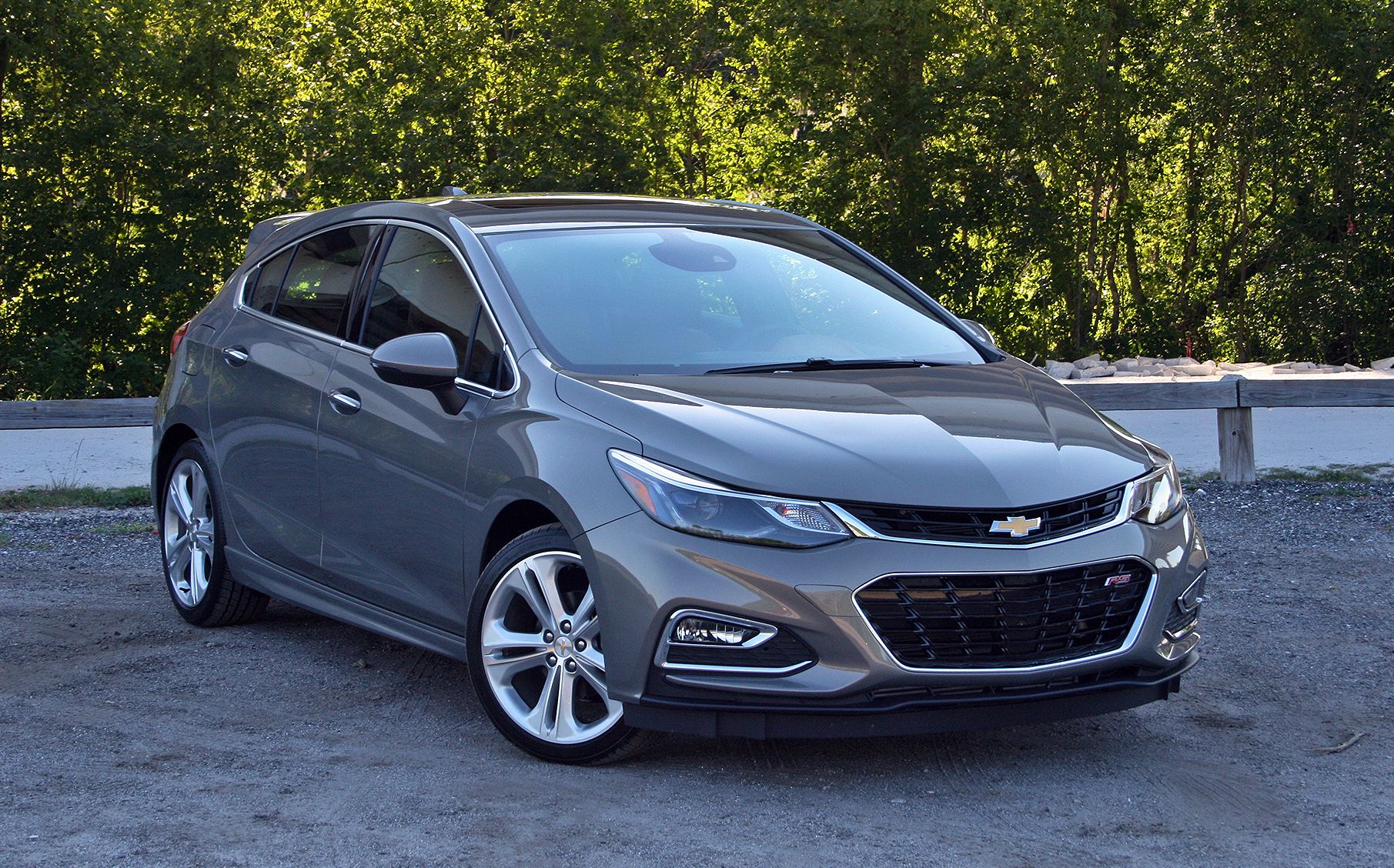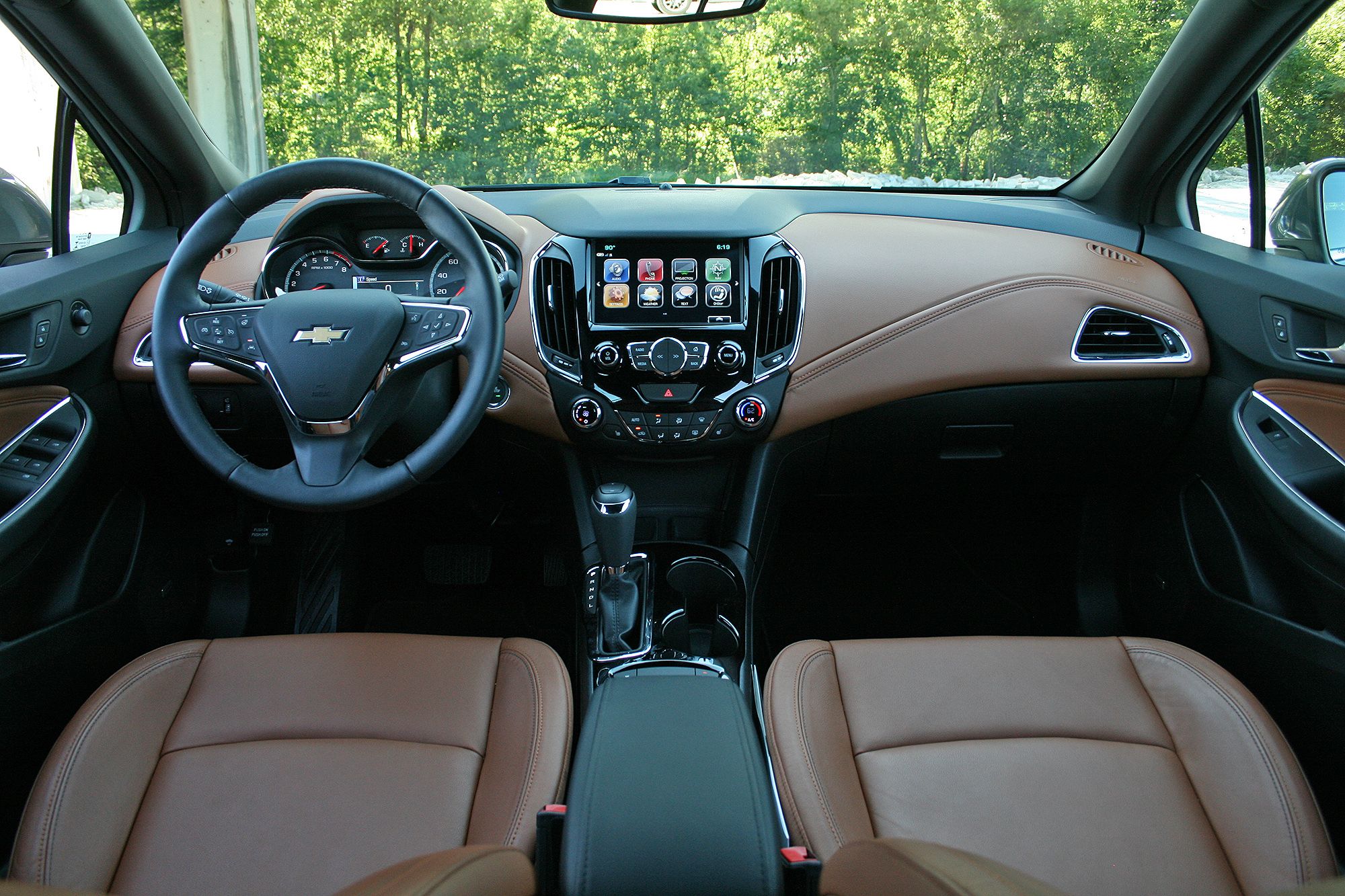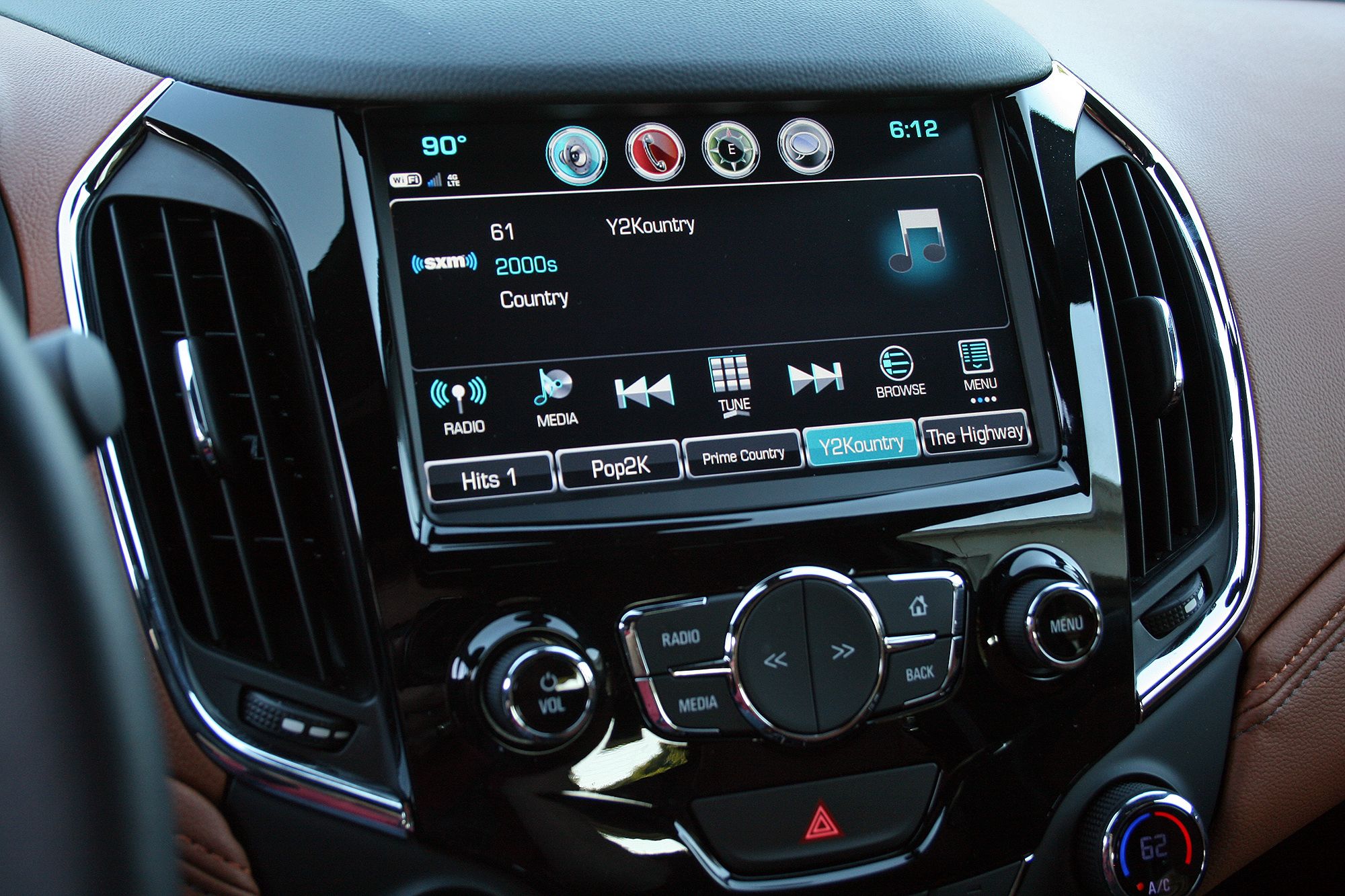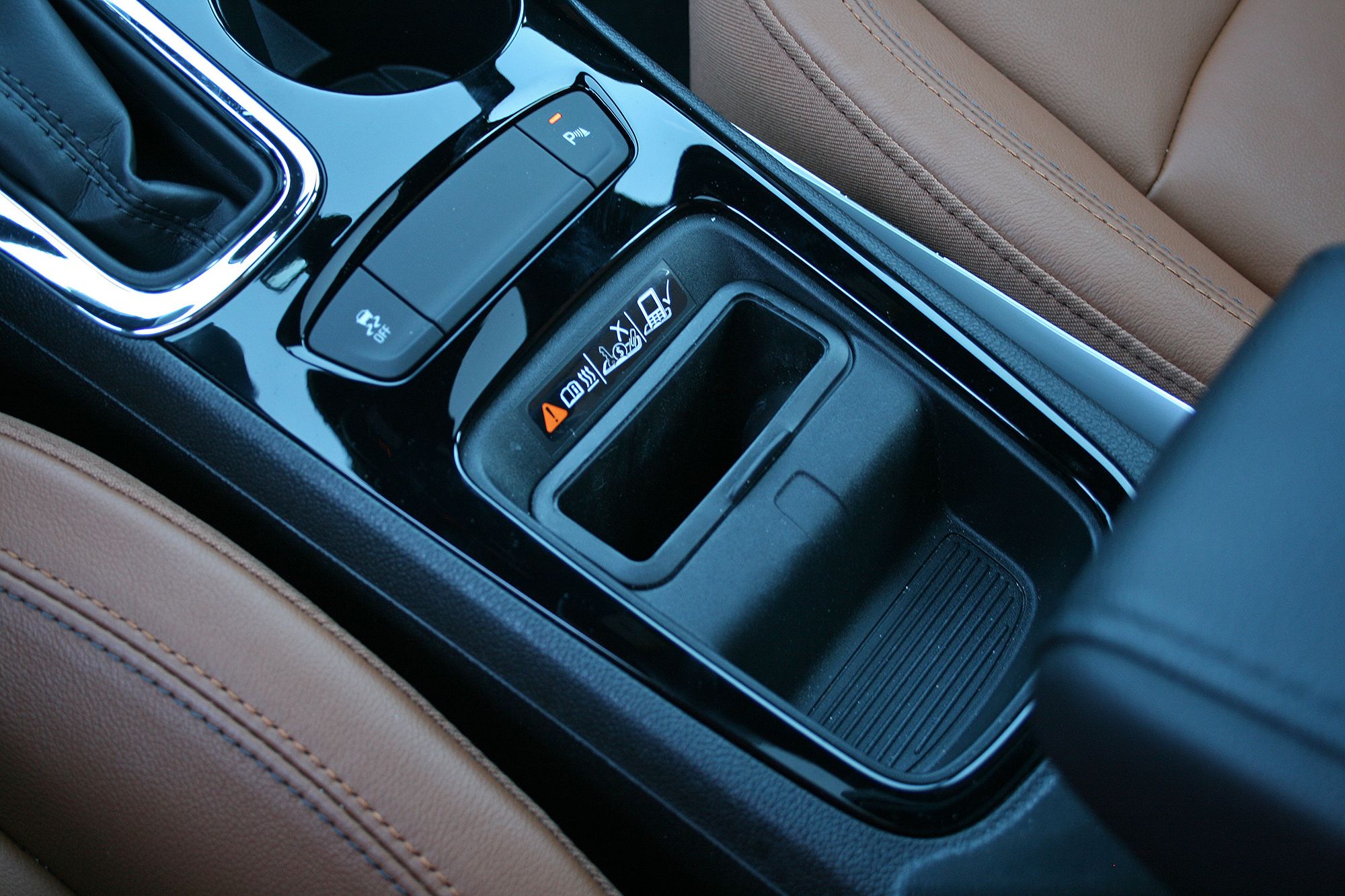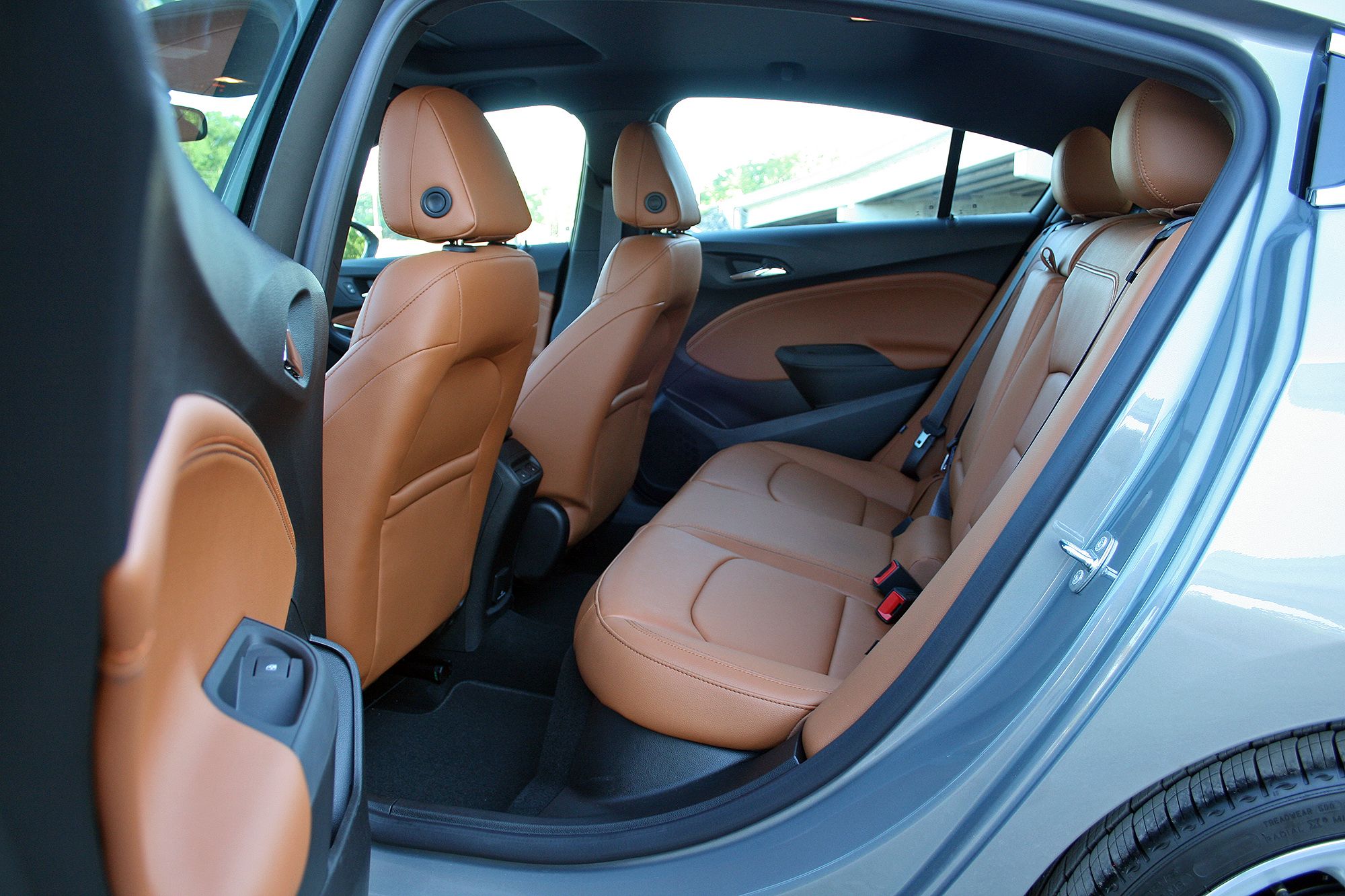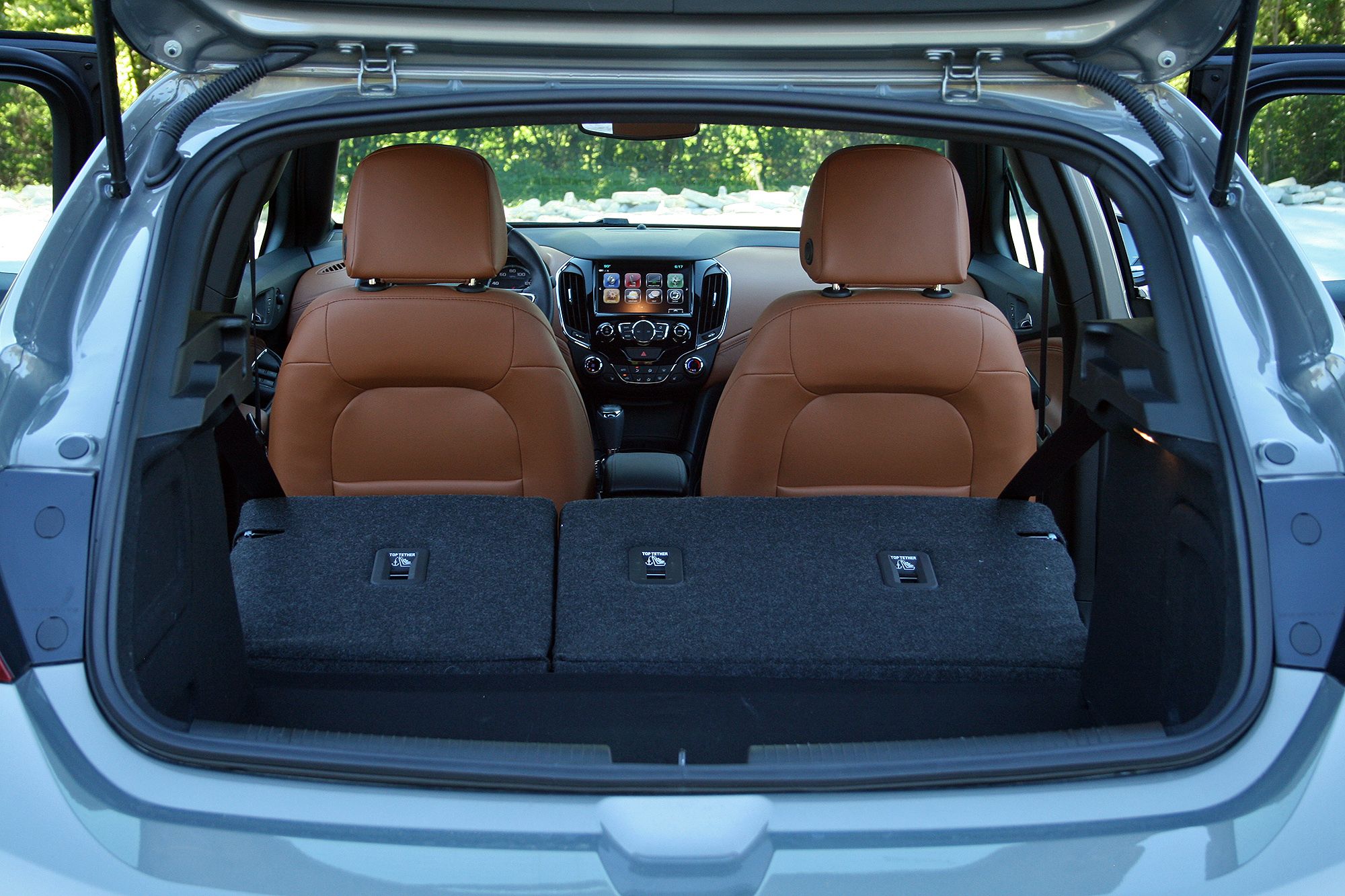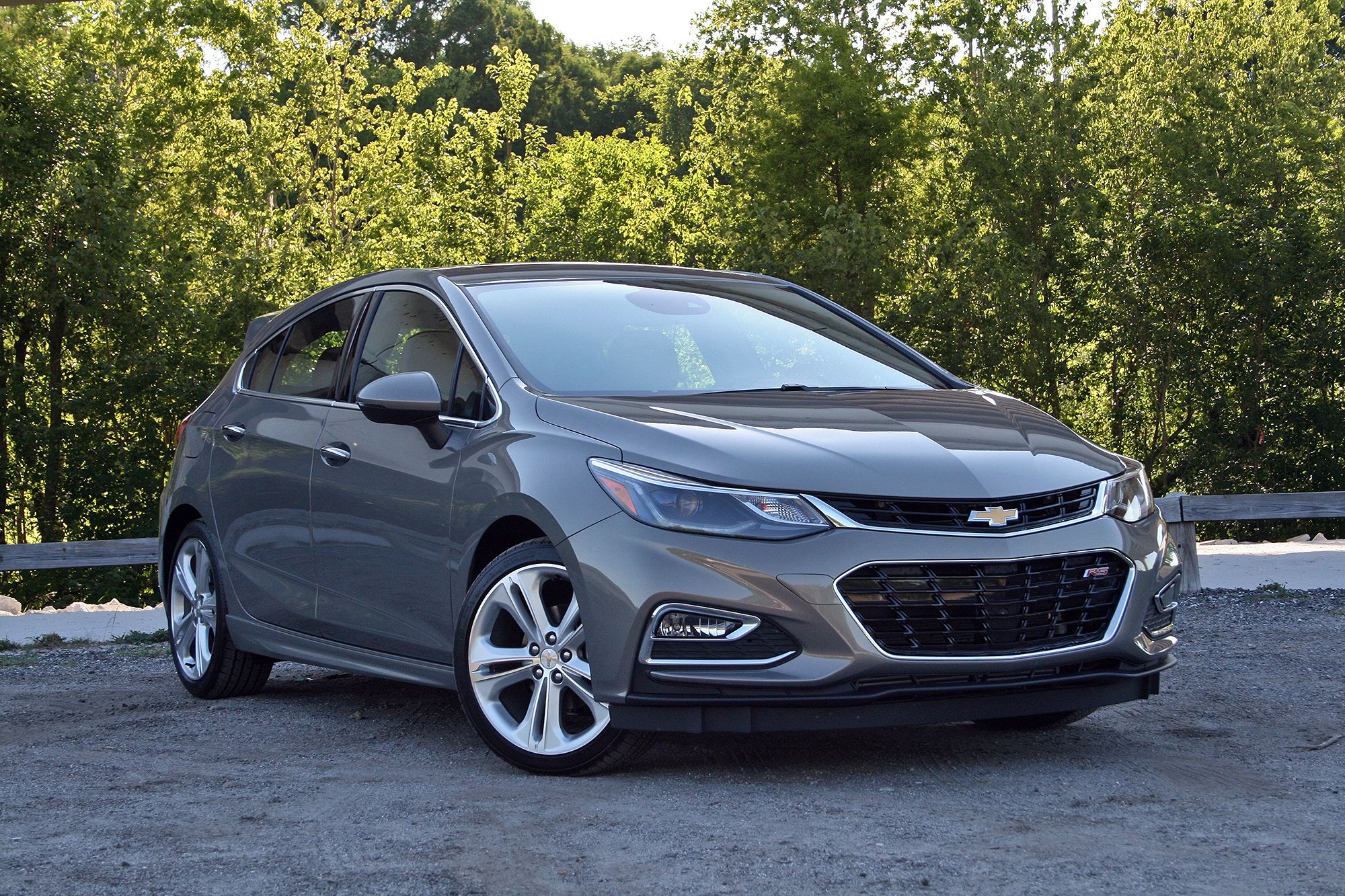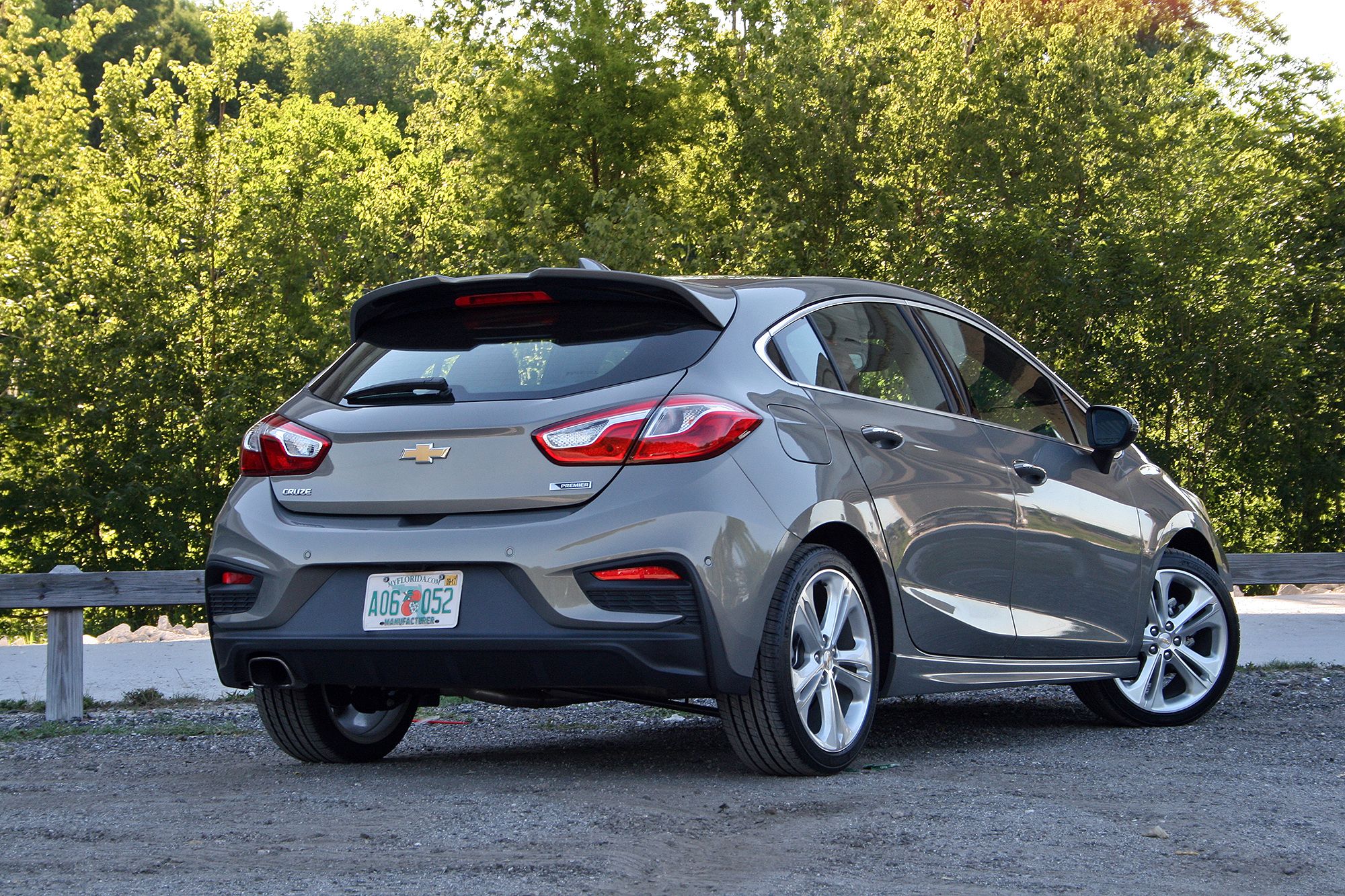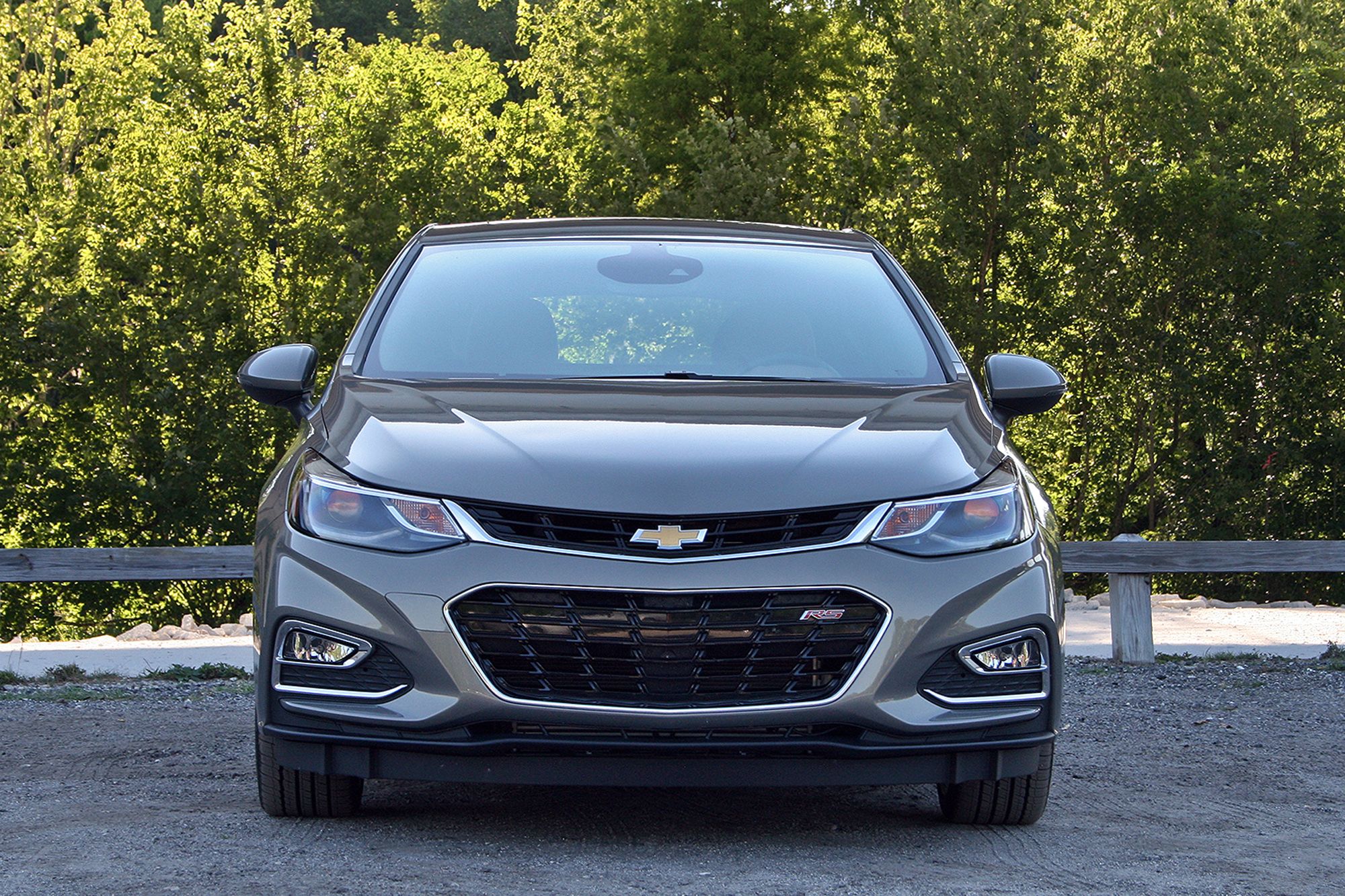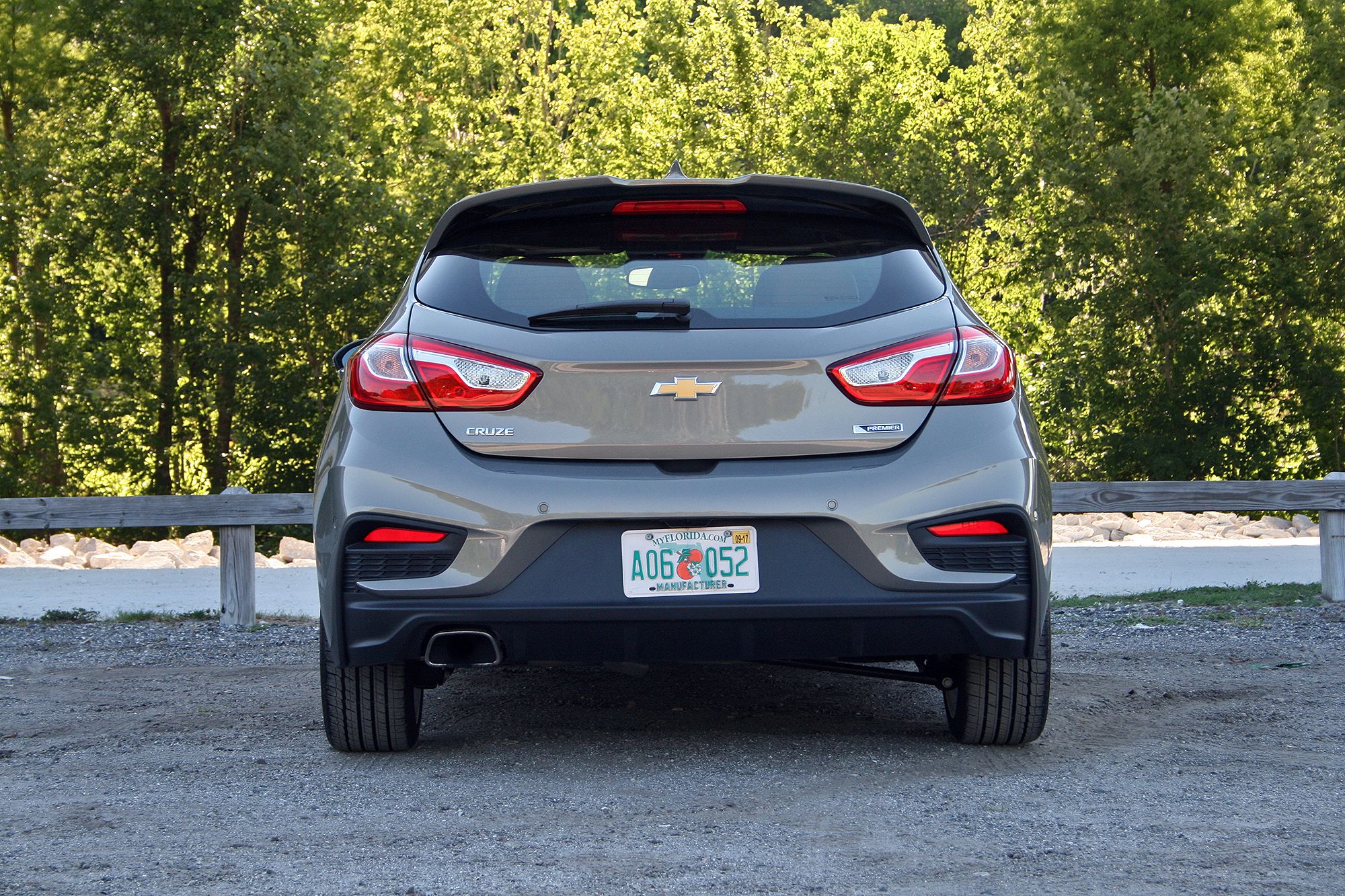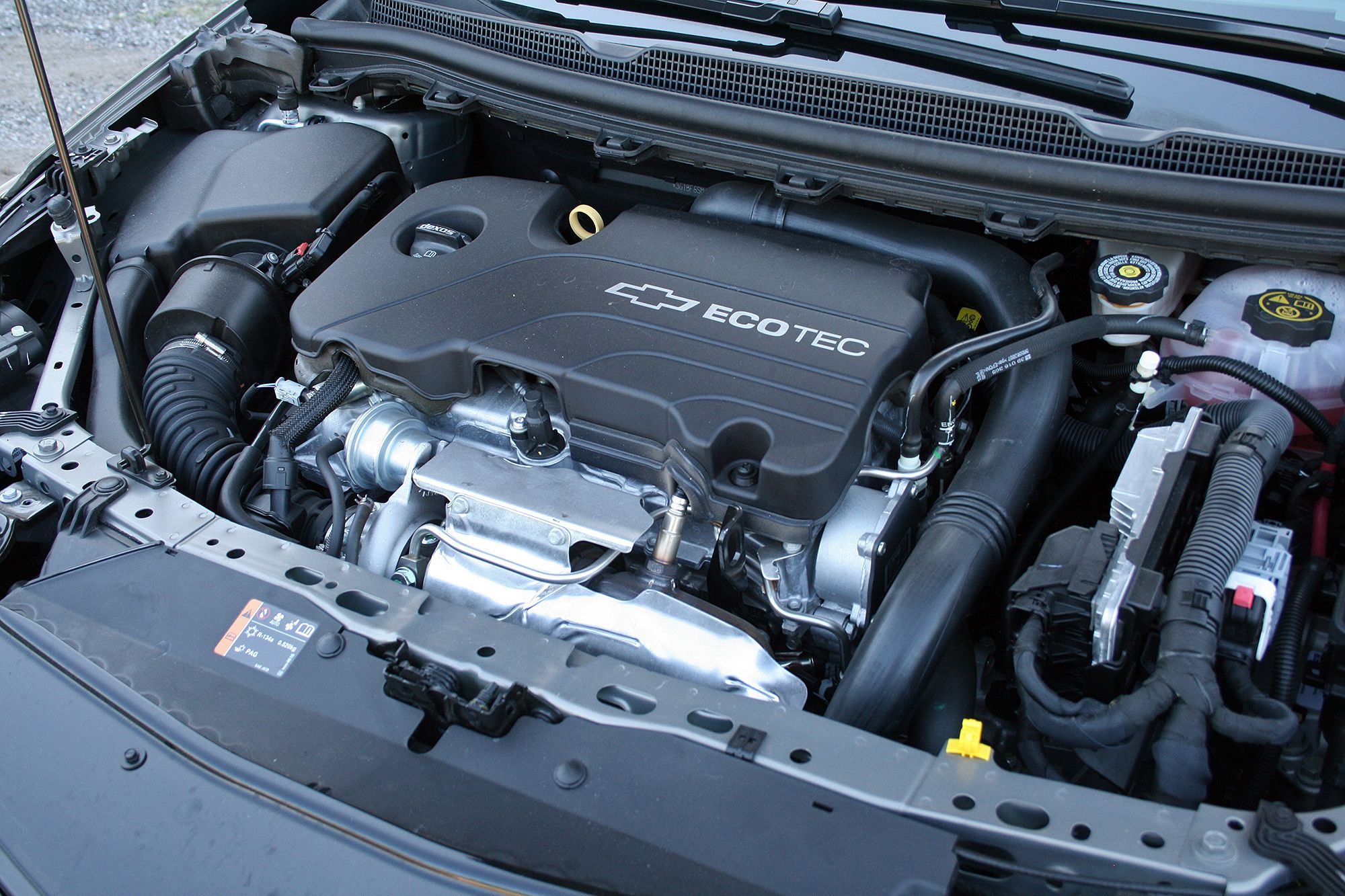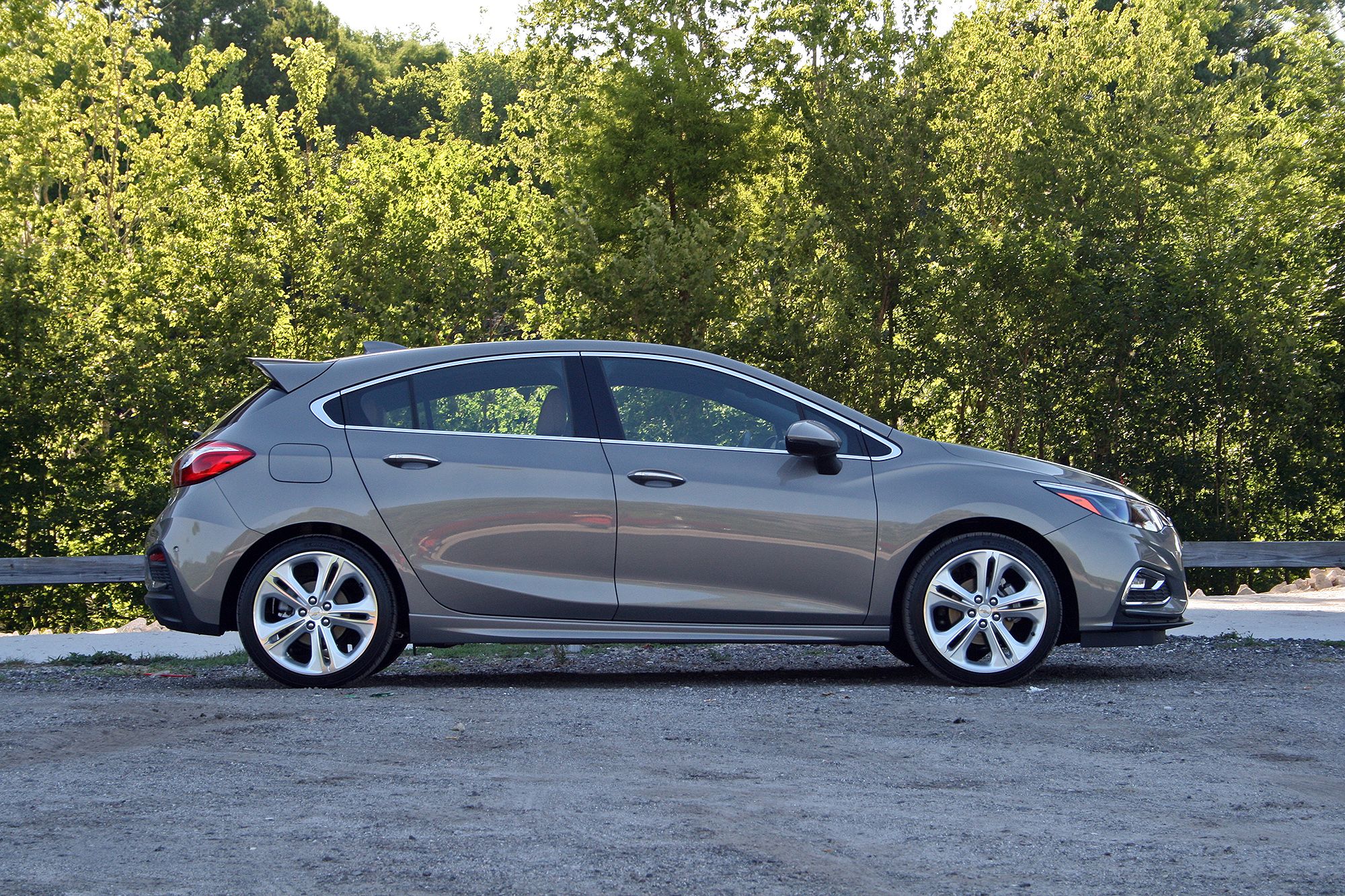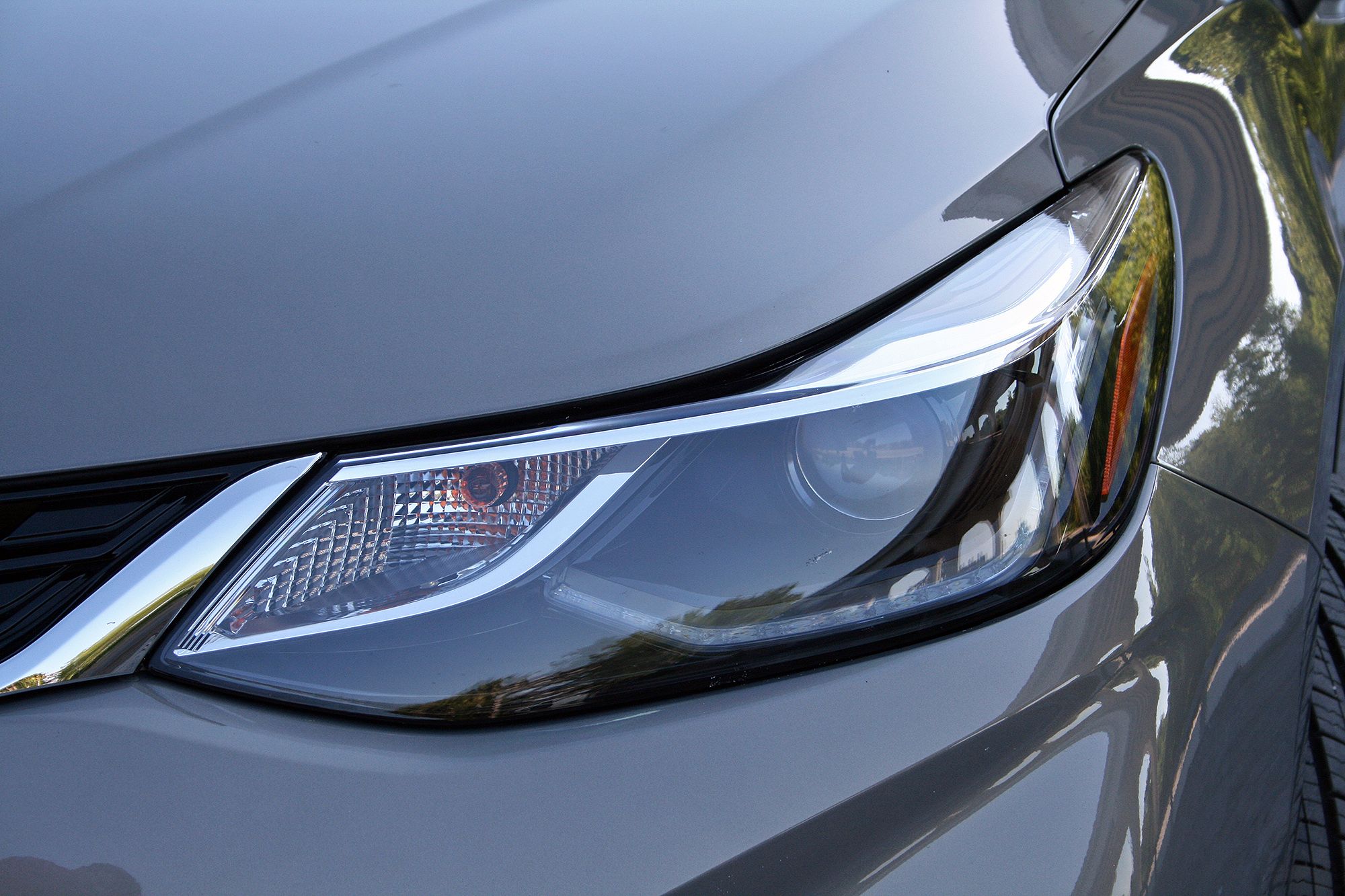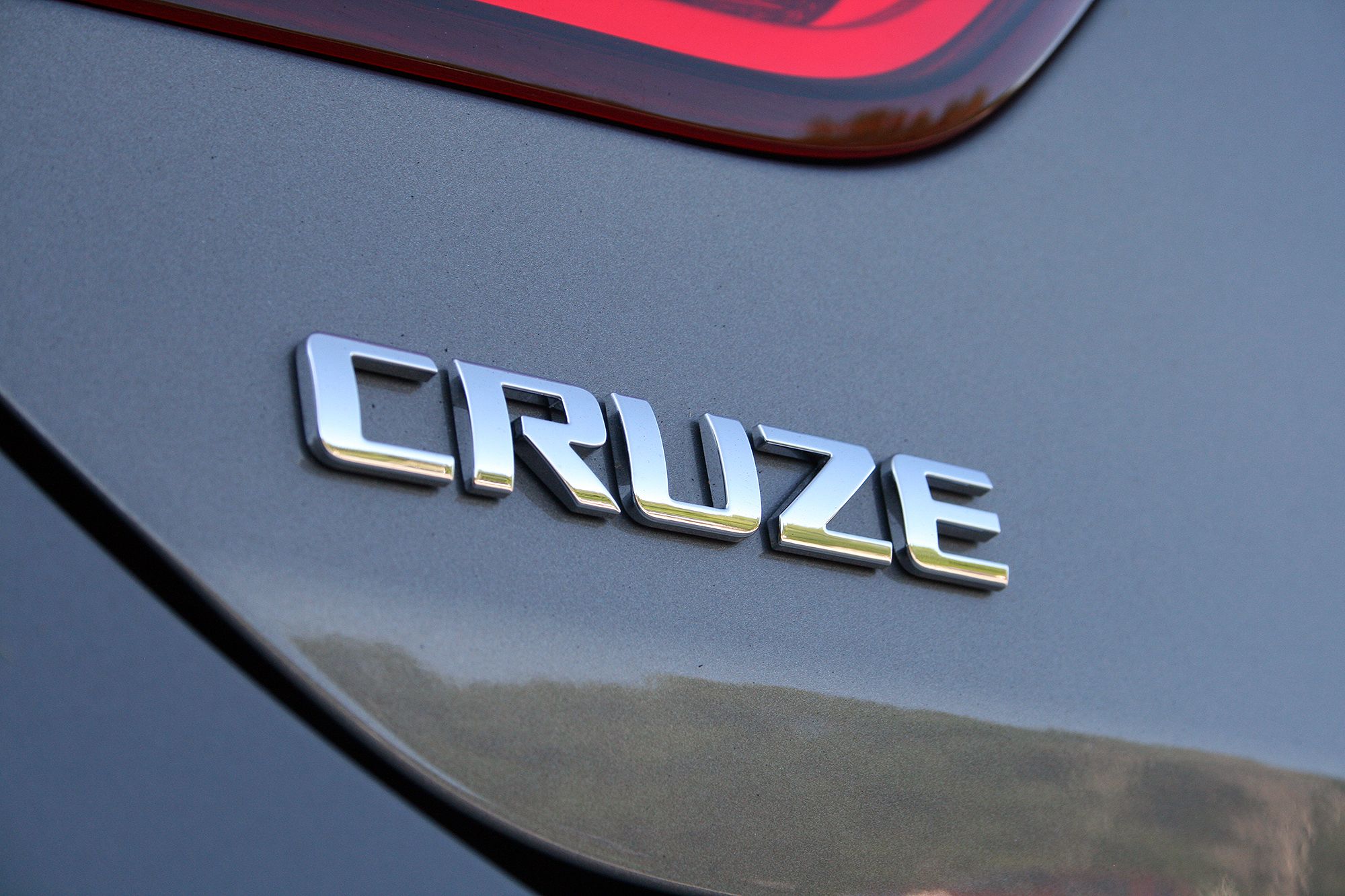It’s no secret crossovers and SUVs are sweeping vehicle sales numbers across the country. Americans are buying these high-riding, unibodied wagons like never before and automakers are responding with even more models. It seems the humble sedan’s days are numbered. But crossovers are inherently compromised – their high center of gravity and sloppy on-road handling not rewarded with off-road capability as with traditional SUVs. The crossover is the cotton candy of the automotive world; all fluff and sugar with no substance. But there’s a better way to get loads of cargo volume without killing on-road drivability. Enter: the hatchback. And perhaps the best and newest example is the 2017 Chevrolet Cruze Hatchback.
I’d wager the average Joe and Suzie Carbuyer bought their crossover because it looks cool and offers more interior room than the sedan they traded, while getting better gas mileage than the Chevy Suburban the really wanted but couldn’t afford. Their crossover acts as the happy median and everybody is satisfied. But are they really? Their crossover compromise in every imaginable sense. Suzie misses the cheap fuel bill their sedan provided and Joe wishes for better control when taking Interstate off-ramps. But they pretend to be happy because they don’t know any better. In reality, Joe and Suzie should have bought the Cruze Hatchback. Stick with me on this…
Continue reading for more.
What About Interior Room?
Ah, so you’ve been convinced by flashy advertisements saying crossovers are better for growing families or folks who just need more room. What those TV and Facebook ads don’t point out is that the Chevy Cruze Hatchback offers more interior cargo space than several crossovers, including Chevy’s own Trax. Ironically enough, the Trax is even based on the first-generation Cruze. The new-for-2017 Cruze hatchback offers an impressive 23 cubic feet of space between the second row and liftgate. Fold the 60/40-split bench flat, and you’ll increase the cargo volume to 47 cubic feet. And the Trax? It only has 18.7 cubic feet behind the second row and a marginally larger 48.4 cubic feet with everything folded flat.
The Cruze Hatchback even outguns Toyota’s new 2018 C-HR crossover. The Yota falls short with 19 cubes and 36.4 cubes in each respective place. The same is true for the popular Mazda CX-3 crossover. It only musters 12.4 and 44.5 cubes. Perhaps most impressive, the Cruze even out hatchbacks the Honda Civic Hatchback, though only in total cargo volume and only by a smidgen. The Honda offers 25.7 cubes behind the second row and 46.2 cubes with it folded.
Okay, so the Chevy Cruze Hatchback isn’t as cavernous as every crossover. The Nissan Rogue Sport out hauls it with an impressive 61 cubic feet of space with the second row folded. Interestingly enough, the Nissan matches the Chevy at 23 cubic feet behind the second row. The Jeep Renegade also has slightly more overall cargo room with 50.8 cubes with the second row folded. Latch that back seat in place, however, and the Jeep is only good for 18.5 cubic feet. And perhaps the Cruze Hatchback’s biggest rival, the Volkswagen Golf, falls into the same category with the Jeep; the Golf has 22.8 cubes behind the second row, but 52.7 cubes total.
The lesson in these figures is this: a descent hatchback offers roughly the same, if not more interior cargo room than many of today’s crossovers.
|
Model |
Cargo Volume seats up (cu ft) |
Cargo Volume seats down (cu ft) |
|
Chevrolet Cruze hatch |
23.0 |
47.0 |
|
18.7 |
48.4 |
|
|
19 |
36.4 |
|
|
12.4 |
44.5 |
|
|
23.0 |
61.0 |
|
|
18.5 |
50.8 |
|
|
25.7 |
46.2 |
|
|
22.8 |
52.7 |
The Other Benefits
Aside from the interior room, the Chevy Cruze Hatchback offers better handling than most crossovers thanks to its lower center of gravity. Add to that the improvement in steering thanks to reduced body roll and better aversion to tumbling over in a collision. Getting in and out of the Cruze Hatchback is easy, too, thanks to its sedan-like ride height. Grandma and your young kids will thank you. About the only negative to this lowered ride height is the missing “lookout perch” afforded by high-riding crossovers and SUVs. I’d counter by saying a lookout perch is only good if it’s taller than the surrounding trees. If most vehicles on the road are crossovers and SUVs, the advantage is lost.
Then, of course, there’s fuel economy. The Chevy Cruze Hatchback gets an EPA-estimated 29 mpg city, 38 mpg highway, and 32 mpg combined. Power comes from an all-aluminum, direct injected, and turbocharged 1.4-liter four-cylinder making 153 horsepower and 177 pound-feet of torque. Add to that the Cruze hatch’s light 3,000-pound curb weight. By comparison, the 2017 Chevy Trax in front-wheel drive only gets 25 mpg city, 33 mpg highway, and 28 mpg combined. Likewise, the 2018 Toyota C-HR only musters 27 mpg city, 31 mpg highway, and 29 mpg combined. Not even the Volkswagen Golf can beat the Cruze Hatch in fuel efficiency. Its 1.8-liter turbo-four and automatic transmission only earns an EPA-estimated 25 mpg city, 35 mpg highway, and 29 mpg combined. Granted, the Golf does make more power with 170 horses and 199 pound-feet of torque.
Only the 2017 Honda Civic Hatchback with the 1.5-liter turbo-four and CVT earned better than the Cruze Hatch in this metric. It gets an EPA-estimated 31 mpg city, 40 mpg highway, and 34 mpg combined. But Chevy has an ace up its sleeve. Starting in mid 2017, the Cruze Hatchback is getting the Cruze Sedan’s 1.6-liter four-cylinder turbodiesel. Customers can choose between a six-speed manual (Yes, please!) and a nine-speed automatic.
Neither Chevy nor the EPA have released fuel economy estimates of the diesel-power Cruze Hatch, but in the 2017 Cruze Sedan, the turbodiesel and nine-speed combo earns an EPA-estimated 31 mpg city, 47 mpg highway, and 37 mpg combined. That’s impressive. Opting for the manual, the EPA-estimate for highway economy jumps to 52 mpg, while the city rating drops by one mpg to 30. The combined mpg remains at 37 mpg. Both automatic and manual estimates will likely drop for the turbodiesel hatchback, but only by a mpg or two in each category.
|
Vehicle |
Engine |
Transmission |
Fuel Economy |
|
2017 Chevy Cruze Hatchback |
1.4-liter gas |
Six-speed Auto |
29 city, 38 hwy, 32 comb. |
|
2017 Chevy Cruze Sedan |
1.6-liter turbodiesel |
Nine-Speed Auto |
31 city, 47 hwy, 37 comb. |
|
2017 Chevy Cruze Sedan |
1.6-liter turbodiesel |
Six-Speed Manual |
30 city, 52 hwy, 37 comb. |
|
2017 Chevy Trax FWD |
1.4-liter gas |
Six-Speed Manual |
25 city, 33 hwy, 28 comb. |
|
2018 Toyota C-HR FWD |
2.0-liter gas |
CVT |
27 city, 31 hwy, 29 comb. |
|
2017 Mazda CX-3 |
SKYACTIV-G 2.0L DOHC |
6-speed manual |
27 city, 37 hwy, 31 comb |
|
2017 Mazda CX-3 |
SKYACTIV-G 2.0L DOHC |
6-speed electronically-controlled |
28 city, 37 hwy, 32 comb |
|
2017 Mazda CX-3 |
SKYACTIV-G 2.5L DOHC |
6-speed manual |
25 city, 34 hwy, 29 comb |
|
2017 Mazda CX-3 |
SKYACTIV-G 2.5L DOHC |
6-speed electronically-controlled |
27 city, 36 hwy, 30 comb |
|
2017 Nissan Rogue Sport |
2.0-liter inline-4 |
Xtronic with Eco Mode switch |
24 city, 30 hwy, 27 comb |
|
Jeep Renegade |
1.4-Liter inline-4 |
six-speed manual |
24 city, 31 hwy, 27 comb |
|
Jeep Renegade |
2.4-Liter inline-4 |
nine-speed automatic |
22 city, 31 hwy, 25 comb |
|
Honda Civic hatch |
1.5-liter In-Line 4-cylinder |
six-speed manual |
30 city, 39 hwy, 33 comb |
|
Honda Civic hatch |
1.5-liter In-Line 4-cylinder |
CVT |
31 city, 40 hwy, 34 comb |
|
Volkswagen Golf |
1.8-liter-inline four cylinder |
six-speed manual |
25 city, 36 hwy, 29 comb |
Conclusion
Needless to say, I thoroughly enjoyed my week with the 2017 Chevrolet Cruze Hatchback. Yeah, I still think it’s a bit underpowered, but the missing horsepower isn’t as prevalent the longer it’s been since driving supercars around a racetrack. The Cruze hatch is simply a darn good car loaded with practicality. Is it perfect? No. But it’s a far better alternative to many of the inherently compromised crossovers flooding our nation’s roadways. And that’s coming from a guy who fancies himself a truck and SUV enthusiast. In my current life station with one kid and more planned in the future, I’d definitely give the Cruze Hatchback a strong look if considering a new set of wheels – especially the turbodiesel and manual combination. Nicely done, Chevy.

